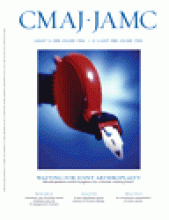Sexually transmitted diseases on the rise
Alberta announced the launch of a $2 million campaign to combat the rise of sexually transmitted diseases on June 17, 2008, a day after releasing figures indicating skyrocketing rates of gonorrhea and chlamydia among young people in the province. The ads will encourage condom use and regular testing for the diseases.
In 2007, there were 112 cases of gonorrhea per 100 000 Alberta males between the ages of 15 and 19, compared to 53 per 100 000 in 2002. For females in the same age group, gonorrhea rates increased from 130 to 208 per 100 000. Reported incidents of chlamydia for males increased by about 25%, while rates among females remained constant.
“There's been a rise in unsafe-sex practices since the AIDS era because our prevention measures have fallen off,” says Dr. Ameeta Singh, an infectious diseases consultant with Alberta Health and Wellness. Surging rates of sexually transmitted diseases have been of national concern since the late 1990s. In 2007, according to Statistics Canada, the national rate per 100 000 of population for chlamydia was 219.5 (compared to 113.9 in 1997), for gonorrhea 34.9 (compared to 14.9), and for syphilis 3.5 (compared to 0.4).
Other countries have reported similar increases. In the United Kingdom, cases of syphilis among people aged 45 to 64 increased 139% between 2002 and 2006, and cases of chlamydia rose 51%. The US Centers for Disease Control and Prevention reported in March 2008 that 1 in 4 teenage girls in the United States has a sexually transmitted disease, which experts claim is due, in part, to the growing popularity of oral sex. An estimated 3.2 million teenage girls in that country are at risk for health problems such as infertility and cervical cancer because they have chlamydia, trichomoniasis, herpes simplex virus or human papillomavirus. — Roger Collier, CMAJ
G8 attention to neglected diseases research welcomed
The Drugs for Neglected Diseases Initiative faces the challenge of running clinical trials on promising drugs in remote parts of the world, where health care infrastructure is minimal, access is difficult and political instability the norm.
So a pledge from Group of 8 leaders to support research into treatments for neglected diseases was very welcome, says Jana Armstrong, director of the organization's newly opened North American branch, based in New York City.
The mission of the 5-year-old independent and non-profit pharmaceutical organization is to discover and develop new drugs, and ensure access to treatments for 3 tropical diseases: sleeping sickness, leishmaniasis and Chagas. Contributions from governments account for about half of its funding, with the balance coming from Médecins Sans Frontières and the Bill and Melinda Gates Foundation.
The G8 has in the past voiced support for treatment for neglected diseases, but the emphasis on research is new, says Armstrong, whose organization has also been instrumental in launching 2 new combination drugs for malaria, a result of product development partnerships.
In early July, the Group of Eight leaders accepted a recommendation from its health experts group to “reinvigorate” efforts to control or eliminate neglected diseases with a 3–5 year period of sustained action that encompasses research, diagnostics and treatment, as well as prevention. No dollar figure was attached to this pledge.
Running clinical trials in remote, hard-to-access parts of the world is one of the challenges faced by the Drugs for Neglected Diseases Initiative. This jeep is en route to patients in Katanda, Democratic Republic of the Congo. Image by: Els Torreele/DNDi
Armstrong says she hopes the G8 pledge will lead to increased funding to allow a “longer term and sustainable approach to working on these diseases.” There is now “no mechanism that ensures that any drug or vaccine development for neglected diseases gets continually funded and taken forward.”
The Initiative was created because the market-driven drug development system was not researching treatments for patients in the developing world.
The non-profit plans to have 6 to 8 new treatments available by 2014; it now has 250 agreements in place, about half with academic and public institutions, and half with pharmaceutical and biotechnology companies, Executive Director Dr. Bernard Pécoul told the organization's first-ever stakeholders meeting held in late June in New York City.
But he warned that the organization has secured only US$18 million in funding, and needs another US$314 million to carry on its work.
Funding preclinical work — gaining access to promising research and existing drugs that might be useful, and signing licensing agreements — is a hurdle for the organization, but a key logistical challenge is running clinical trials in affected, mostly rural areas. The organization has become involved in training and monitoring local clinical trial staff and even having to build wards or centres for clinical research. “We didn't expect that we would have to get into construction,” says Armstrong.












